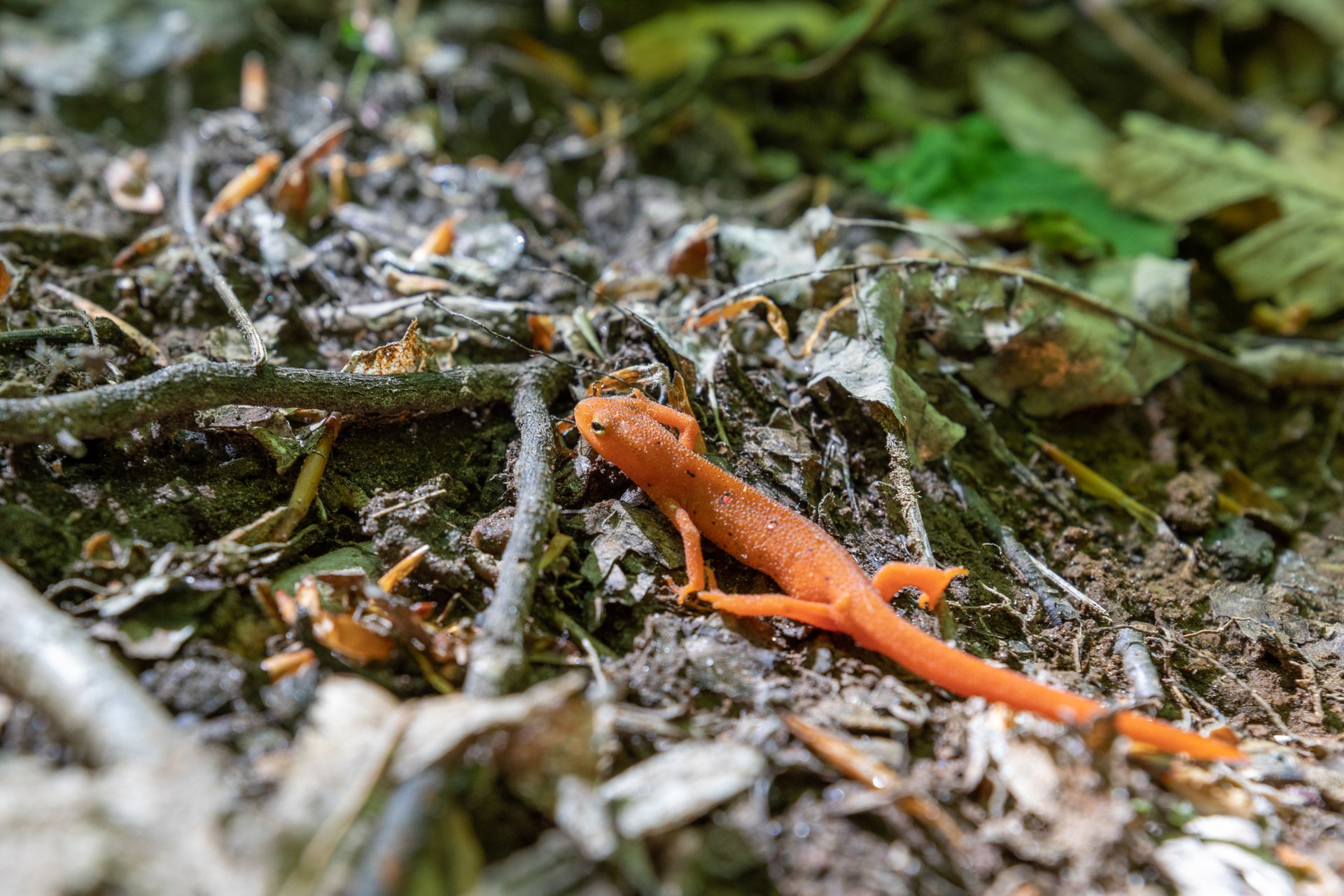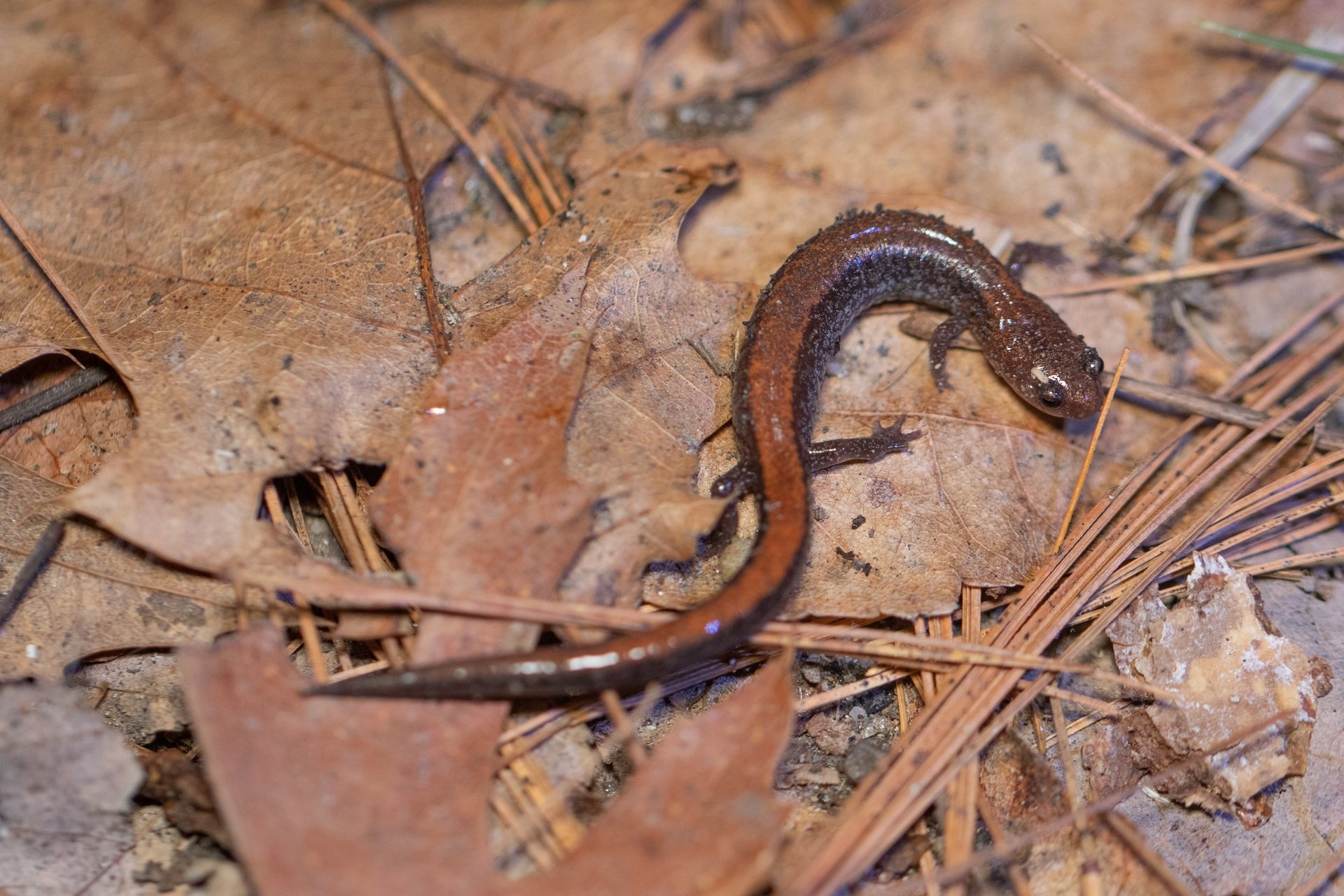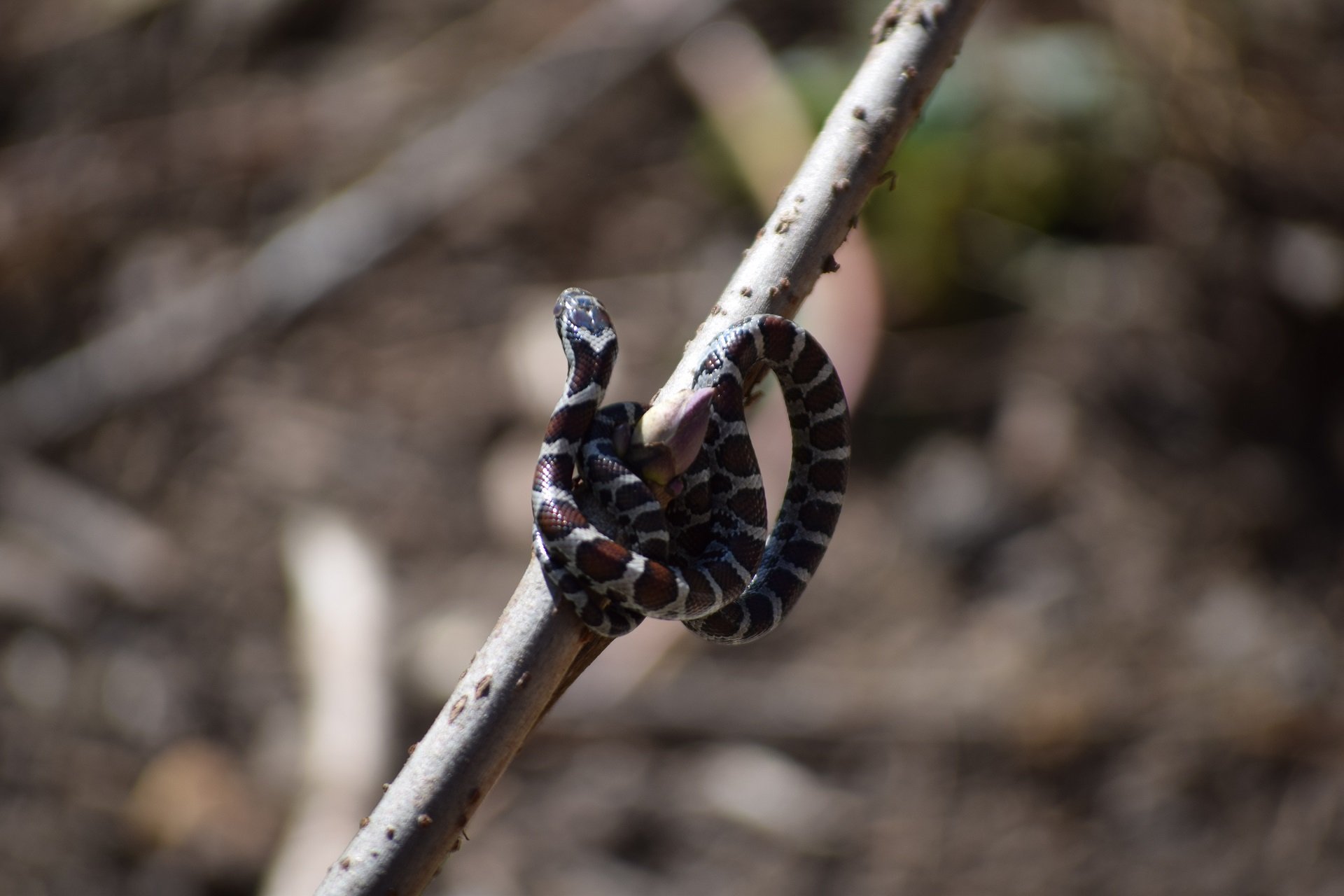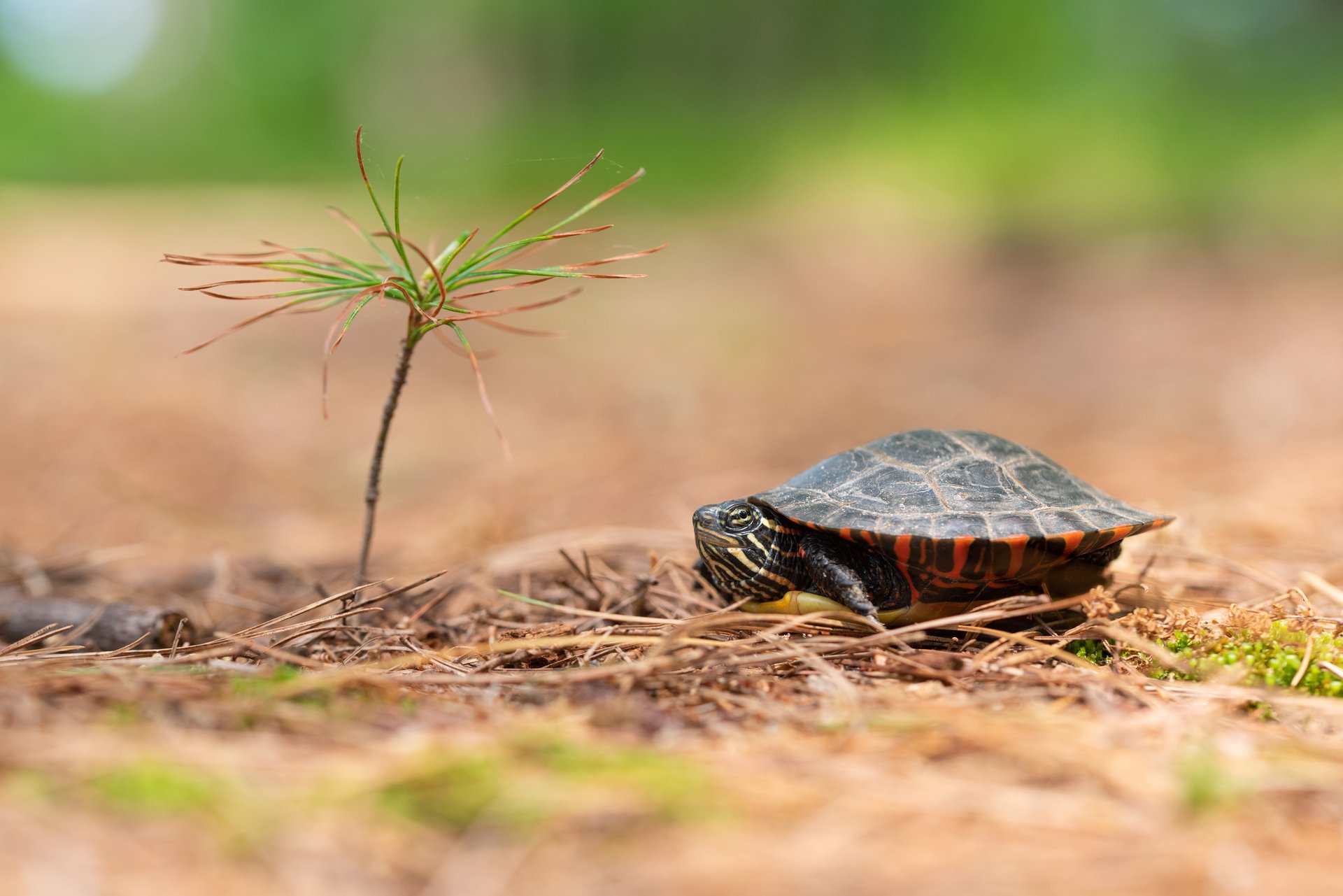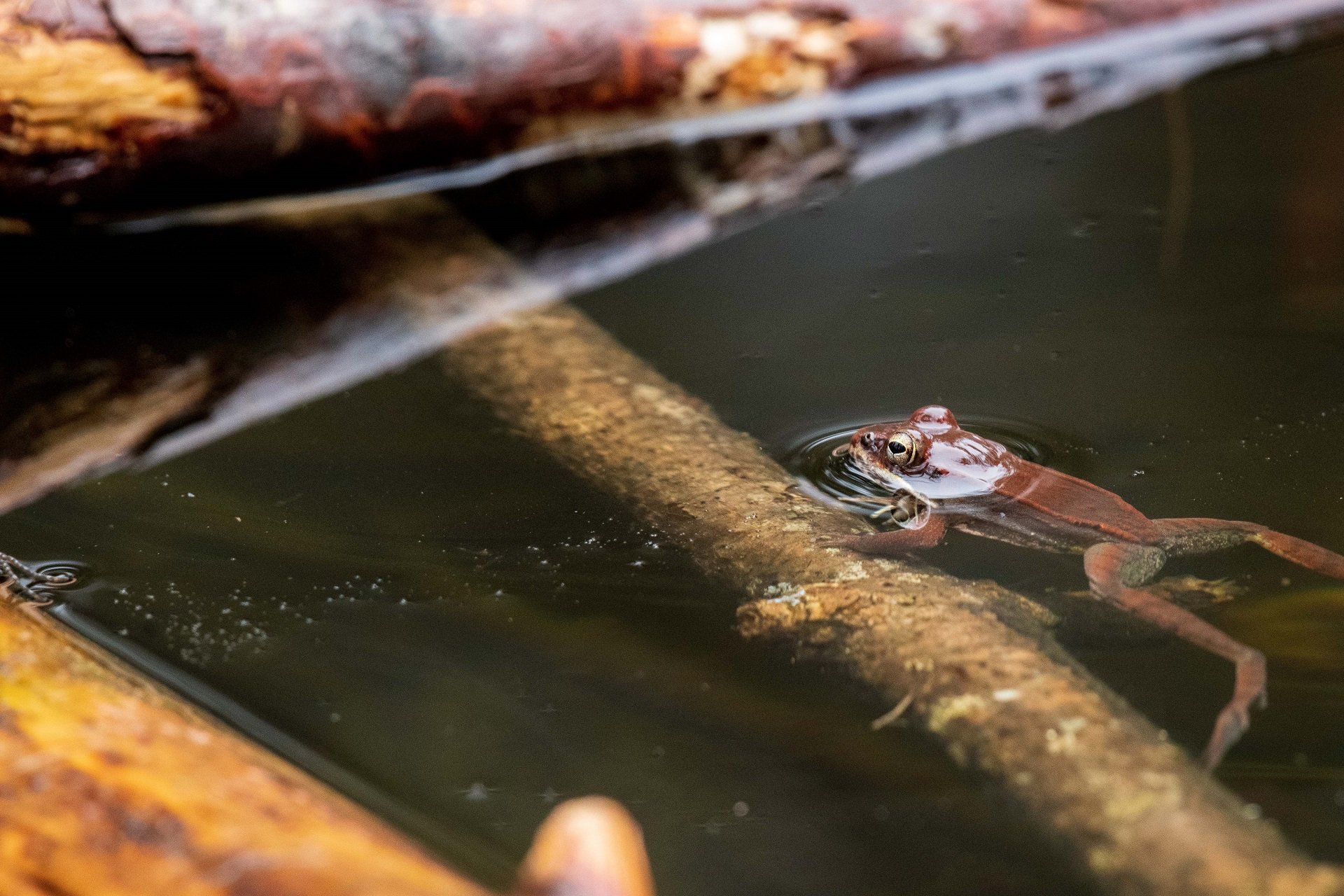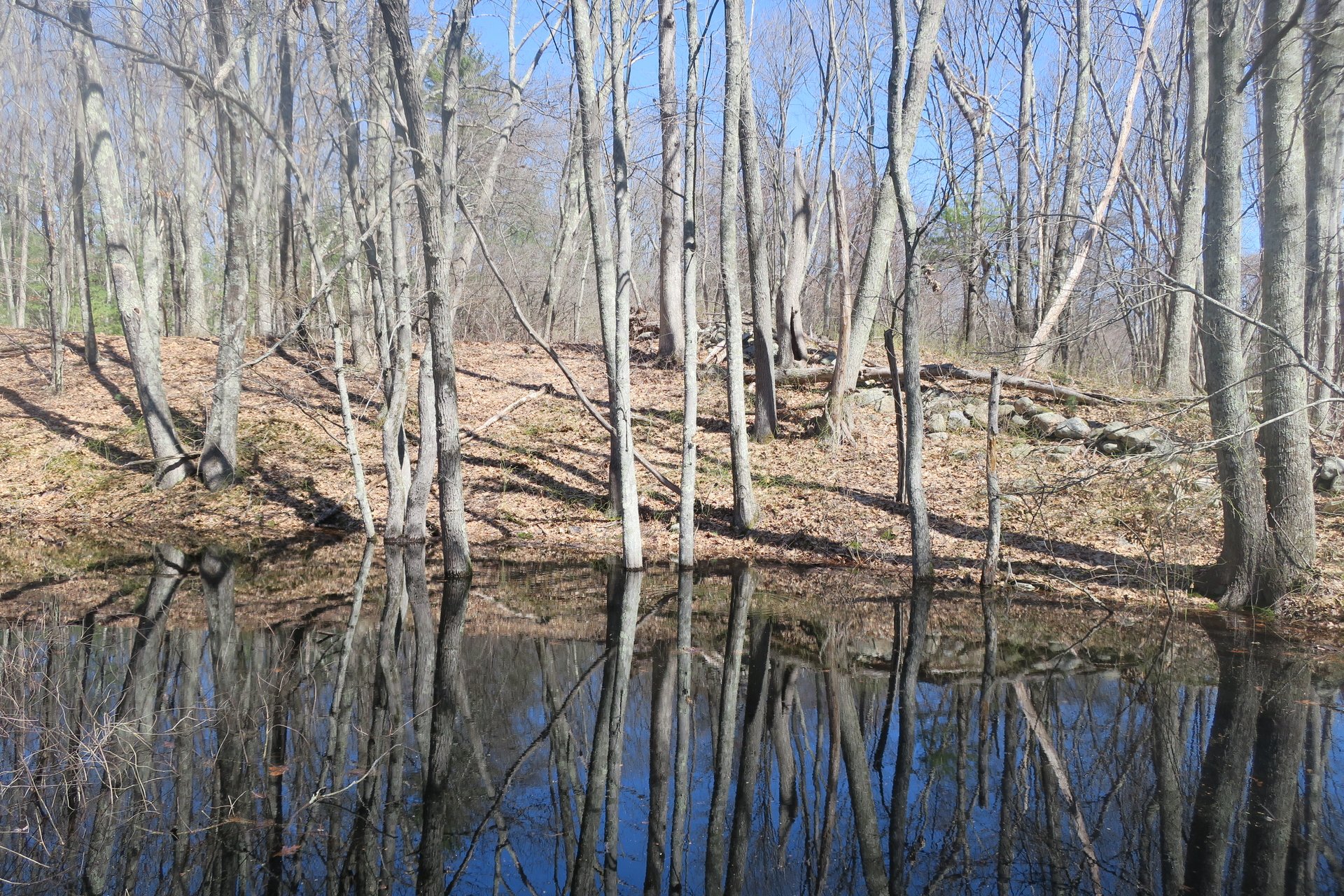Reptiles & Amphibians
Although amphibians and reptiles, two ancient groups of vertebrates (animals with backbones), may seem to resemble each other, they differ in a number of important features of physiology, development, and life cycle.
About Amphibians & Reptiles
Both reptiles and amphibians are poikilothermic, which means that they cannot regulate their own body temperatures internally as birds and mammals do. They do have behavior mechanisms, to warm up, such as basking on sunny days, and they survive our cold New England winters by hibernating in the relative warmth below ground or buried in the mud at the bottom of ponds.
| Amphibians | Reptiles |
|---|---|
|
|
Reptiles & Amphibians in Massachusetts
There are 21 species of amphibians in Massachusetts roughly divided between frogs and salamanders. A number of these are associated with vernal pools. Twenty-four reptiles live and breed in Massachusetts (10 turtles, 14 snakes), and an additional five species of sea turtles annually visit our coast.
How Mass Audubon is Helping Reptiles & Amphibians
Mass Audubon has a longstanding interest in the protection of amphibian and reptile populations in Massachusetts. Our Herp Atlas used volunteers to record the distribution of reptile and amphibian species across the Commonwealth.
We monitor vernal pools that are obligate habitat for a number of salamanders and frogs and have a program to restore and create vernal pools on our sanctuaries.
Salamanders
There are four different families of salamanders in Massachusetts, including newts, mudpuppies, and lungless salamanders.
Snakes
Though snakes get a bad rap, the vast majority of species aren’t venomous and they also provide a valuable service.
Turtles
Although many turtle species live in the water, all must breathe air and lay eggs on land.
Frogs
Because of their diverse habitat needs and sensitive skin, frogs are good indicators of the health of our environment.
Vernal Pools
Vernal pools provide seasonal habitat for amphibian and invertebrate species.



